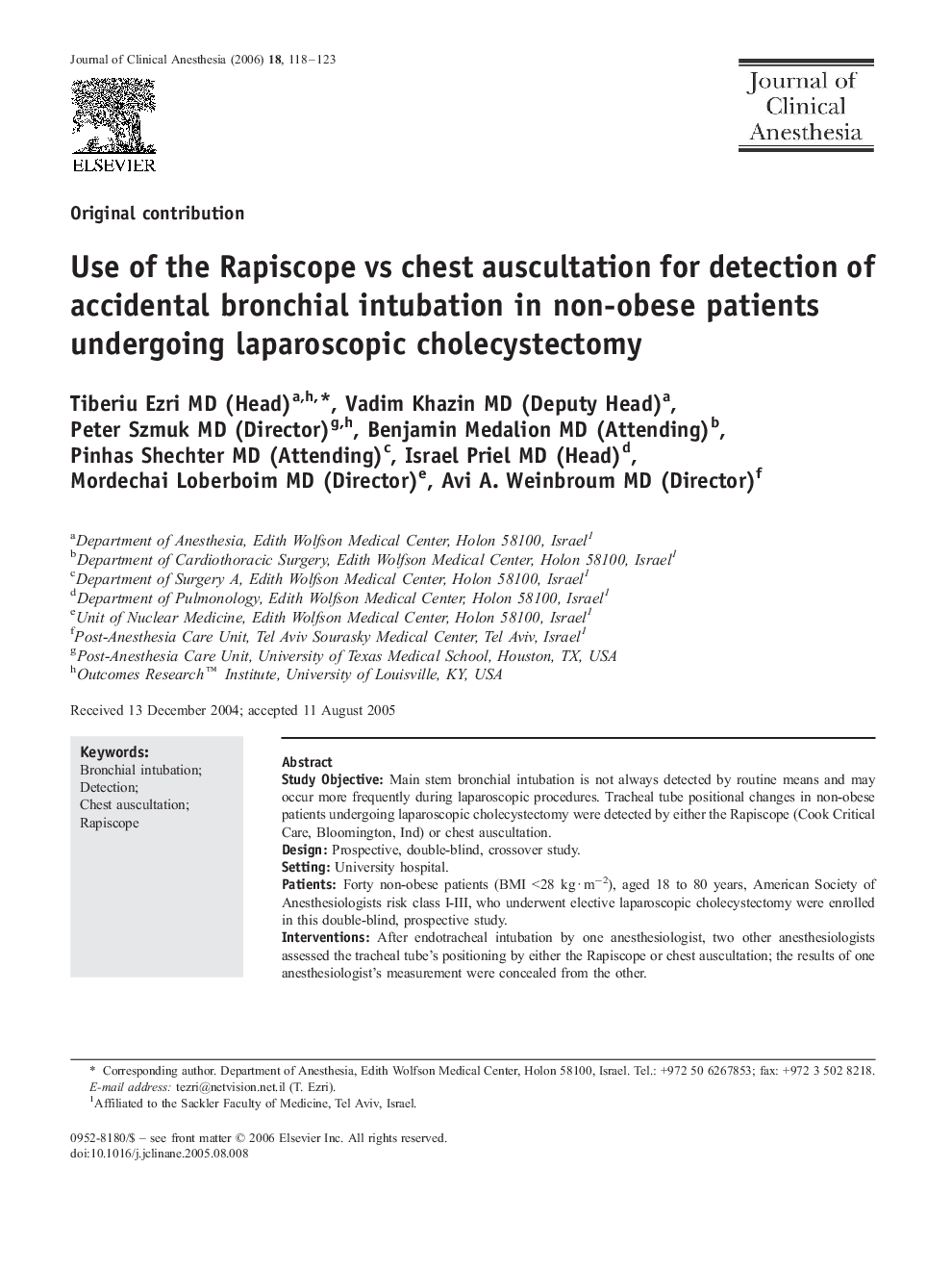| Article ID | Journal | Published Year | Pages | File Type |
|---|---|---|---|---|
| 2763997 | Journal of Clinical Anesthesia | 2006 | 6 Pages |
Study ObjectiveMain stem bronchial intubation is not always detected by routine means and may occur more frequently during laparoscopic procedures. Tracheal tube positional changes in non-obese patients undergoing laparoscopic cholecystectomy were detected by either the Rapiscope (Cook Critical Care, Bloomington, Ind) or chest auscultation.DesignProspective, double-blind, crossover study.SettingUniversity hospital.PatientsForty non-obese patients (BMI <28 kg·m−2), aged 18 to 80 years, American Society of Anesthesiologists risk class I-III, who underwent elective laparoscopic cholecystectomy were enrolled in this double-blind, prospective study.InterventionsAfter endotracheal intubation by one anesthesiologist, two other anesthesiologists assessed the tracheal tube's positioning by either the Rapiscope or chest auscultation; the results of one anesthesiologist's measurement were concealed from the other.MeasurementsAssessments of the endotracheal tube tip's position were performed after intubation, head-down, and head-up positioning, after maximal abdominal insufflation and before extubation. At the same time points, Spo2, ETco2, and peak inspiratory pressures were also recorded.Main ResultsPostintubation Rapiscope assessment revealed normal tracheal positioning of the tube's tip in all patients. Changes in tube's position were subsequently detected by the Rapiscope in 16 patients. In 8 cases, the tip moved endobronchially. Half of the endobronchial intubations occurred after maximal abdominal insufflation and the other half after changing the table position from neutral to 30° head-down. Chest auscultation detected bronchial intubation in two cases only (P = .01). There were 4 additional events of downward movements and 4 events of cephalad migration of the tube's tip identified by the Rapiscope only. ETco2, Spo2, and peak inspiratory pressures did not change in patients who did experience bronchial intubation.ConclusionThe Rapiscope detected significantly more events of endobronchial intubation as compared with chest auscultation; it could be considered useful during procedures where tracheal tube movements are potential.
